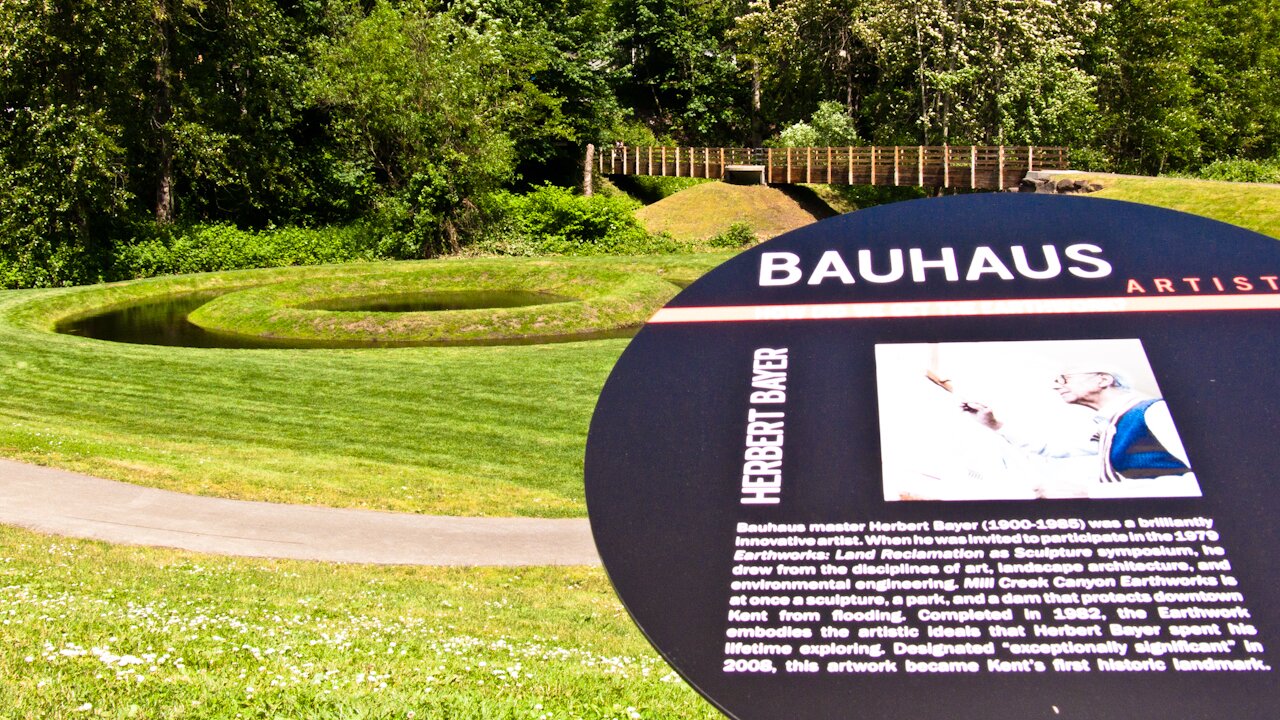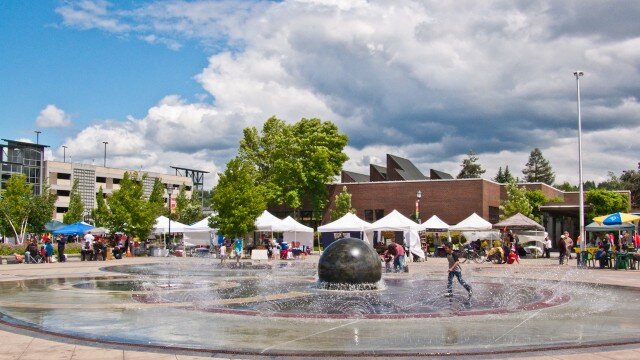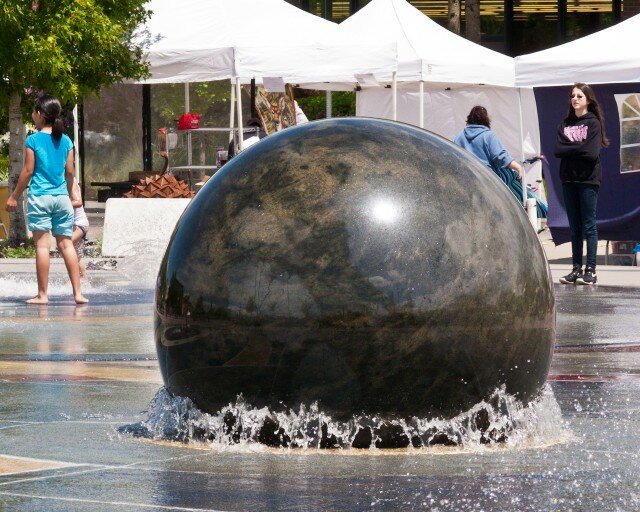Sharp-eyed readers will note that for our purposes, largely due to the Seattle-centric focus of The SunBreak, the hamlet of Kent (né Titusville) does not exist. This isn’t an affectation. Until this weekend, I’d never been closer to Kent than SR 167. So when Seattle Bike Blog announced a new Earthworks public art tour in Kent this past weekend, SunBreak Biking Correspondent Jonathan Dean and I had to consult several maps to locate where, precisely, Kent was, and how best to get there.
We’re pleased to confirm that there is “fun in Kent,” especially on weekends, thanks to the Kent Farmers Market. Hungry cyclists will be pleased by the availability of cookies and cupcakes.
The other good news is that the Green River Earthworks aren’t going anywhere, and so you can visit them by bike any time you feel like–even, or especially, in inclement weather. (Here is the link to a PDF guide that I can’t get to open.) From Seattle, it’s easy enough. You can either pick up the Green River Bike Trail by West Seattle and bike to where it meets the Interurban Trail, or take Central Link light rail to the Tukwila station, and bike down Southcenter Boulevard to where it meets the Interurban Trail, just before crossing the Green River.
The past weekend, Kent was celebrating the restoration of Herbert Bayer’s Mill Creek Canyon Earthworks, which “combines Bauhaus aesthetics with a functioning water detention dam,” and that served as the basis for a 23-mile bike ride that also included the Robert Morris Earthwork, the Green River Natural Resources Area, and Lorna Jordan’s Waterworks Garden.
You didn’t know that Kent boasted an earthwork by a major Bauhaus artist, did you? (Graphic designers will know Bayer as the creator of the Universal typeface.) Here is a short film about Bayer’s earthwork. The restoration effort meant improving “drainage in the bowls, repav[ing] the pathways and reshap[ing] the double-ring pond,” along with “re-sodding the double-ring pond, and restoring the view corridor along the stream.” And it was thanks in part to online voting, since $70,000 came from that American Express and the National Trust for Historic Preservation’s “Partners in Preservation” competition, where people voted for their favorite cause.
The Robert Morris Earthwork, from the same time period, is a conversion of an old sand and gravel pit that went defunct in the ’40s. It’s almost four acres up a steep hillside, terraced, and planted with rye grass that bends cinematically in the wind. As you venture down the circular paths deeper into the bowl, urban sounds drop away, and you get nothing but the breeze and birdsong. Defeated by the hillclimb, even in my lowest gear, I had to walk the last half, though Dean somehow powered up it.
The Green River Natural Resources Area looks, riverside, like much of rest of Green River you see from the bike trail. The difference is in the absence of encroachment by homes, industrial warehouses, and golf courses. I’m told there are observation towers, but we pressed on in our attempt to get to the Waterworks Garden before being cocooned by the blasts of pollen being emitted.
The entrance to the Waterworks Garden isn’t necessarily obvious, by bike from the Interurban. For such a major work, it’s short on signage announcing its presence. (This was true of all of the works actually, despite the 65 orange poles I’m told map the route–I counted about twelve. Some have QR codes so you can smarten up via smartphone, which is nice. But I would have preferred to see the more conventional brown arrows that point you toward cultural sites.) Once you find the garden, though, all is forgiven. Endless forms, meet function. Stormwater is filtered through a series of pools, surrounded by an abundance of native foliage.
At this point, you’re in Renton, and you have to make the decision of how to return to Seattle. You can take the flatter Green River Bike Trail back, and perhaps catch the King County Water Taxi to downtown, or resign yourself to the long upward slope of Southcenter Boulevard, back to the Tukwila light rail station. Light rail is probably the faster way, unless you happen to expire during the climb.























